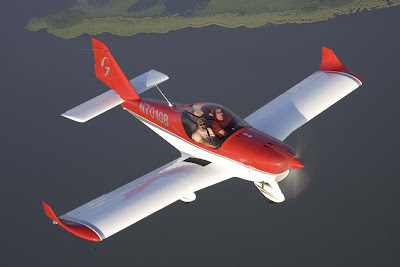



LOS ANGELES, CA – July 26, 2010 – ICON Aircraft, an early-stage, Light Sport Aircraft (LSA) manufacturer, has announced two major design enhancements to improve flight safety and the user-experience of the ICON A5 aircraft. ICON has eliminated wing flaps to simplify pilot operations. ICON has also committed to a spin-resistant design, which will include, among other things, the addition of wing cuffs. Both improvements are designed to simplify aircraft complexity and increase safety—which is especially important for new pilots. “Although these enhancements are not required by the FAA or ASTM,” says Kirk Hawkins, ICON’s CEO, “this is yet another example of ICON raising the bar to not only make the A5 one of the coolest sport planes on the planet—but to make it simultaneously one of the safest and easiest to fly. This is absolutely the right move for the customer and worth the extra work to get there.” While general aviation is inherently quite safe, when accidents do occur, it is the stall/spin scenarios that are responsible for 13.7% of all fatal accidents, according to the Aircraft Owners and Pilots Association (AOPA). Of these accidents, it is slow-speed maneuvering prior to landing that is the most common accident scenario. Making the A5 spin resistant will help ensure that the pilot maintains control of the aircraft at all times, even if the airplane is inadvertently stalled. “Spin resistance is arguably the most significant safety improvement we could add to the already docile- handling A5,” said Matthew Gionta, ICON’s CTO and VP of Engineering. One safety feature already on the A5 is the Angle of Attack (AOA) indicator (standard on modern fighter jets) that shows the pilot at any given time exactly how the wing is flying, and most importantly, how close they are to a stall. “When combined with the AOA indicator, spin resistance adds a second level of safety where, in the event of a stall, the A5 remains wings-level and the pilot does not lose control of the aircraft.” Removal of the flaps is the other improvement to the A5. Flaps are typically used to reduce an aircraft’s stall speed for landing. However, Light Sport Aircraft regulations already require that Light Sport Aircraft stall no faster than 45 knots without the use of flaps. Given this FAA requirement combined with the LSA maximum speed restriction, ICON eliminated the A5 flaps since they offer marginal benefit for their increased complexity. “When an airplane can function equally well with less complexity, the result is increased safety,” said Gionta. “The pilot of an A5 will never have to remember to set the flaps for landing, whether on water or land. This is a classic example where simplicity is elegance, and that translates directly into a safer aircraft for our pilots.” ICON Aircraft has committed itself to fielding an aircraft that offers high performance for experienced pilots, while also being safe and very accessible for novice pilots. These two design improvements confirm the company’s commitment to that philosophy. Over one third of ICON’s current orders come from individuals who are not yet pilots.
ABOUT ICON AIRCRAFT: ICON Aircraft is a consumer sport plane manufacturer founded by Kirk Hawkins and Steen Strand while at Stanford University shortly after the Federal Aviation Administration (FAA) enacted regulation changes in 2004 that created the new sport flying category. Kirk is an engineer, former U.S. Air Force F-16 fighter pilot, and graduate of Stanford Business School. Steen, a former investment banker and Harvard graduate, holds a Masters in Engineering from Stanford in Product Design and is a serial entrepreneur. A privately funded company, ICON Aircraft’s base of operations is in Southern California, which is a hotbed for automotive design and aerospace engineering.







